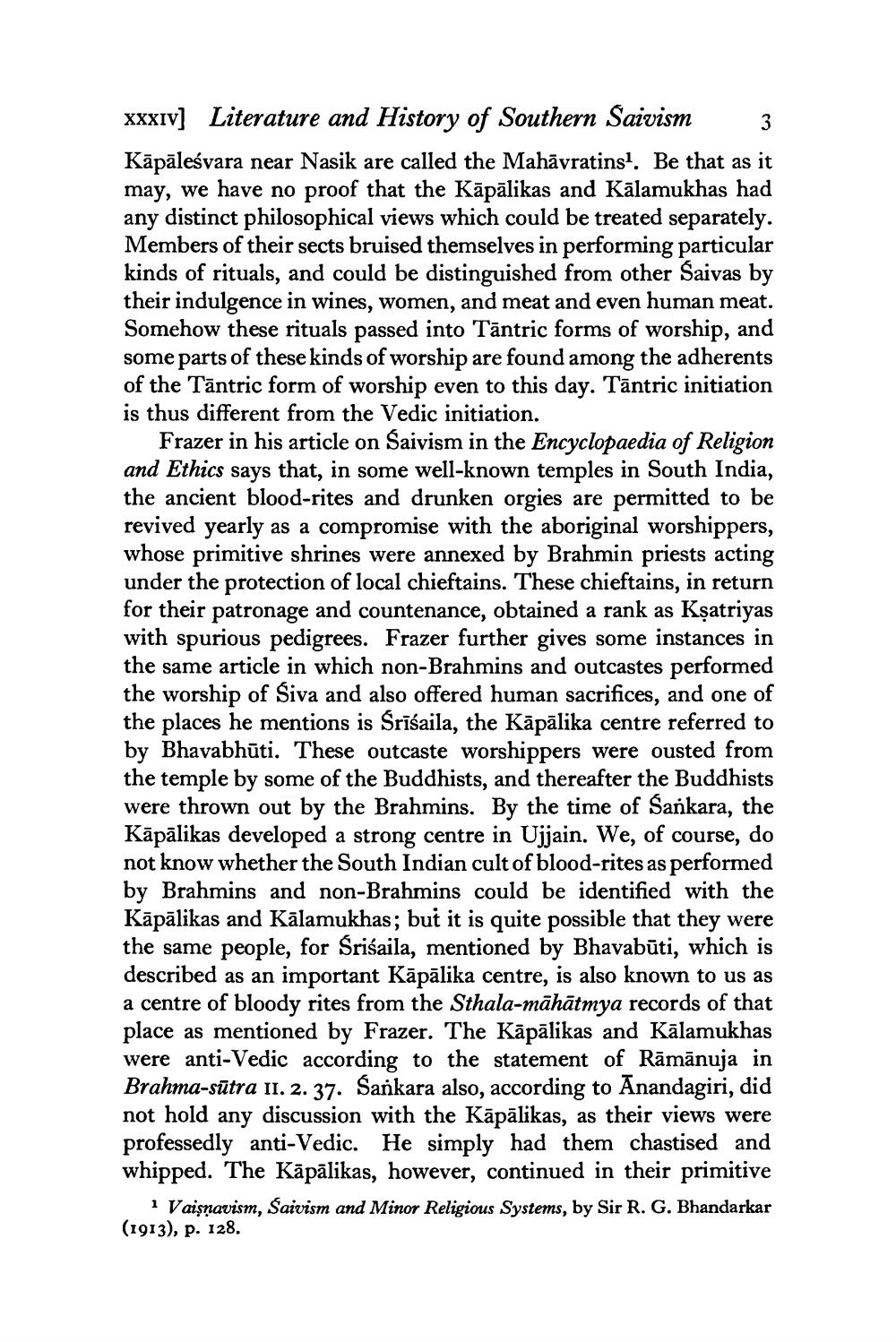________________
XXXIV] Literature and History of Southern Saivism 3 Kāpāleśvara near Nasik are called the Mahāyratinsł. Be that as it may, we have no proof that the Kāpālikas and Kālamukhas had any distinct philosophical views which could be treated separately. Members of their sects bruised themselves in performing particular kinds of rituals, and could be distinguished from other Saivas by their indulgence in wines, women, and meat and even human meat. Somehow these rituals passed into Tāntric forms of worship, and some parts of these kinds of worship are found among the adherents of the Tāntric form of worship even to this day. Tāntric initiation is thus different from the Vedic initiation.
Frazer in his article on Saivism in the Encyclopaedia of Religion and Ethics says that, in some well-known temples in South India, the ancient blood-rites and drunken orgies are permitted to be revived yearly as a compromise with the aboriginal worshippers, whose primitive shrines were annexed by Brahmin priests acting under the protection of local chieftains. These chieftains, in return for their patronage and countenance, obtained a rank as Ksatriyas with spurious pedigrees. Frazer further gives some instances in the same article in which non-Brahmins and outcastes performed the worship of Siva and also offered human sacrifices, and one of the places he mentions is Srīśaila, the Kāpālika centre referred to by Bhavabhūti. These outcaste worshippers were ousted from the temple by some of the Buddhists, and thereafter the Buddhists were thrown out by the Brahmins. By the time of Sankara, the Kāpālikas developed a strong centre in Ujjain. We, of course, do not know whether the South Indian cult of blood-rites as performed by Brahmins and non-Brahmins could be identified with the Kāpālikas and Kālamukhas; but it is quite possible that they were the same people, for Srisaila, mentioned by Bhavabūti, which is described as an important Kāpālika centre, is also known to us as a centre of bloody rites from the Sthala-māhātmya records of that place as mentioned by Frazer. The Kāpālikas and Kālamukhas were anti-Vedic according to the statement of Rāmānuja in Brahma-sūtra 11. 2. 37. Sankara also, according to Anandagiri, did not hold any discussion with the Kāpālikas, as their views were professedly anti-Vedic. He simply had them chastised and whipped. The Kāpālikas, however, continued in their primitive
i Vaişnavism, Saivism and Minor Religious Systems, by Sir R. G. Bhandarkar (1913), p. 128.




